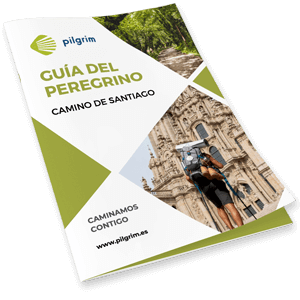Northern Way

Have a good way!
Why choosing the Northern Way?
We find in this slope, a less overcrowded Way than the French, which has a good signaling but on the other hand also has less infrastructure. It is the second longest route, only behind the Silver Route, which will surround us with the tranquillity of the coastal and sailor villages that we will reach on our way and with a route that, except in the climbs to the mountains, where we will need to have our full strength, is characterized by being quite quiet.
The Northern Way is possibly one of the options that will provide us with the most beautiful landscapes, thanks to its discourse between sea and mountain, where the greenery of small Basque, Cantabrian, Asturian or Galician villages is blurred in the distance with the pristine blue of the Cantabrian Sea. In addition, its gastronomy has the reputation of being a successful memory of our journey, so the choice of this route is synonymous with sure success in our desire to discover the magic of the Camino de Santiago .
The North Way goes along the whole peninsular coast from east to west bordering the Cantabrian Sea along the main municipalities of northern Spain. It starts from Irún in the direction to Compostela, leaving behind an indelible trail in cities such as San Sebastián, Bilbao, Santander or Gijón until entering Galicia. From Gijón we are introduced to the key decision of our pilgrimage, since we have the option of taking a connection that guides us to Oviedo to continue along the Primitive Way or, on the contrary, continue the Northern Way to Avilés and enter Galicia through the town of Ribadeo, a coastal municipality of the Mariña Lucense that separates us approximately 180km from our arrival in Santiago.
Arrived at the locality of San Vicente de la Barquera, in Cantabria, there is the opportunity to follow a route with its own history, so important is that it has its own Jubilee Year, sharing this honor with the pilgrimages to Rome o Santiago de Compostela itself, this route is called the Lebaniego Way.
35 stages / 804 Kms
Stages on foot
Continuation along the French Way
18 stages / 827 Kms
Stages by Bike
You will like this way, if you like…
Cities and towns

San Sebastián

Bilbao

Santander

Santillana del Mar

Gijón

Ribadeo
More information…
About the Northern Way
History
This is one of the routes with the greatest history together with the Primitive Way, and with an age similar to the French route. It was the route used many times by the kings of the whole European continent to reach Santiago. However, it lost protagonism due to the stabilization of the southern peninsular territories after the Reconquest and the development of the French layout by the 12th century monarchy. In spite of it, the persistence of pilgrimages that sometimes arrived by coast to the Basque and Cantabrian ports, finally managed to consolidate what would become known as the Coastal Way.
Celebrity pilgrims contributed to this process of rebirth and consolidation of the Northern Way, as in the case of San Francisco de Asís, who made a pilgrimage to Santiago in 1214 and who, according to legend, took advantage of his pilgrimage to found numerous Franciscan temples. The presence of these Christian temples, Templar settlements or pilgrim hospitals also contributed to positioning the route along the coast in the place it occupies today.
Distances and elevation
Elevation Profile

Other recommended routes
There are many other routes, take a look below at the best alternatives:
313 km / 14 days
764 km / 33 days
119 km / 6 days
115 km / 5 days
620 km / 25 days
960 km / 38 days
Useful Information
Frequently asked questions about the Nortern Way
As reflected in the stages section, the Northern Way is made up of a total of 35 stages in one distance of 804 km starting from the Basque town of Irún. Yeah you do the Northern Way by bike The stages will be 18.
If your goal is to obtain the Compostela , you must do at least the last 100 km of the Camino, in the case of this route are carried out from the town of Vilalba. However, if you do the Camino in bike, the minimum distance is 200 km, which would take you start from Charity
Along the northern route you will travel through a large number of towns, each with its own charm. However, there are a series of towns/cities that make pilgrims fall in love with their step, these are: San Sebastián, Deba, Bilbao, Santander or Llanes, among others.
The Northern Way is unique in terms of landscapes since its route runs along the coast of northern Spain, colliding with the green meadows and forests characteristic of these lands. You will be able to discover a large number of beaches that leave every pilgrim breathless.
The Northern Way is also called Coastal Way for its route next to the Cantabrian Sea. Its greatest relevance obtained in periods of Muslim conquest of the Iberian Peninsula and subsequent insecurity of the French road. The route runs through communities such as the Basque Country considered one of the places with the best gastronomy in the world.
In Pilgrim.es We have the most complete information about this way and many more. Enter our website and discover all the routes that make up the Camino de Santiago, its stages, maps and even the towns with their indications about what to see in each one.
Learn more about us
Helping pilgrims since 2016
Pilgrims
+54.000
Nationalities
+45
Google Rating
4,7 ★
Affiliated businesses
+7500































